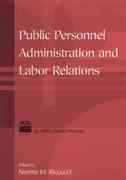Question
At first, there is only a limited supply of 1000 doses of See-Ya-Corona. The government has to develop a strategy for allocating vaccine doses. You
At first, there is only a limited supply of 1000 doses of See-Ya-Corona. The government has to develop a strategy for allocating vaccine doses. You have been hired to determine how the government should allocate vaccine doses. All available doses of See-Ya-Corona will be allocated to health care workers and professors. Assume the government wants to minimize the expected number of new COVID-19 infections (or equivalently, maximize the expected number of COVID-19 cases prevented). Let x1 denote the number of health care workers vaccinated and x2 denote the number of professors vaccinated. Each health care worker has a 20% chance of becoming infected and each professor has a 10% chance of becoming infected. An infected health care worker infects 10 new people, while an infected professor infects 5 new people. A single dose of See-Ya-Corona provides 100% protection against COVID-19.
- (a)What is the function that represents the government's preferences?
- (b)Because of repeated contact with COVID-19 patients, health care workers now require 2 booster shots in addition to 1 dose of See-Ya-Corona. Everything else remains the same as in part (a). Let x3 denote booster shots. Show function that represents the government's preferences.
- (c)Assume everything is the same as in part (a), except for the probability that a professor becomes infected with COVID-19. What does the probability that a professor becomes infected have to be for the government to vaccinate both health care workers and professors in an optimal allocation?
Step by Step Solution
There are 3 Steps involved in it
Step: 1

Get Instant Access to Expert-Tailored Solutions
See step-by-step solutions with expert insights and AI powered tools for academic success
Step: 2

Step: 3

Ace Your Homework with AI
Get the answers you need in no time with our AI-driven, step-by-step assistance
Get Started


